Sharlyn J. Lauby's Blog, page 45
December 11, 2022
Why Employees Need to Understand Compensation ��������������������������������������������������–ow to Tell the Company Your Reason for Resigning � Ask HHR Bartender�����������������

Estimated reading time: 10 minutes
Today’s reader note deals with an important subject – compensation. Both employees and employers need to know the principles of compensation so they can understand if they’re being paid correctly and equitably.
My husband and I accepted jobs with a Christian non-profit as houseparents for foster kids. The kids go to regular public school. We are required to live on premises and not allowed to work another job. We each make a salary of $446 weekly.
It was our understanding that we would be classified as salary, but nonexempt, with a 40-hour workweek. In practice, we’re treated as if we are salary exempt and have consistently worked over 40 hours weekly without further compensation. I thought salaried exempt had a minimum weekly wage of $684.
I’m hoping you can sort this out for me. If we are salary exempt, shouldn’t we each be making $684 weekly? Thank you so much for any help.
There are so many things we don’t know about this situation like where the individuals are located, what their job offer said, etc. But I thought this would be a great time for a refresher on the Fair Labor Standards Act (FLSA) which is the law that deals with exempt and nonexempt classifications.
To help us understand more, I reached out to my friend and employment law attorney Carrie Cherveny to see if she would assist, and thankfully, she said “yes”. Carrie is senior vice president of strategic client solutions in HUB International’s risk services division. In her role, she works with clients to develop strategies that ensure compliance and risk mitigation when it comes to insurances such as health and welfare programs and employment practices liability.
Please don’t forget that Carrie’s comments shouldn’t be construed as legal advice or as pertaining to any specific factual situations. If you have detailed FLSA questions, they should be addressed directly with your friendly neighborhood labor and employment attorney.
Carrie, thanks so much for being here. Let’s start with a definition. I think many people know what salaried (exempt) and hourly (nonexempt) mean. What’s “salaried nonexempt”?

[Cherveny] As you mentioned, when we talk about the rules that govern employee pay and classifications, we are talking about the Fair Labor Standards Act (FLSA). Some states may have their own equivalent which may be as strict or stricter than the federal. The FLSA establishes the non-exempt employee minimum wage, overtime, recordkeeping, and child employment standards.
A ‘salaried’ nonexempt employee is somewhat of a misnomer – while the DOL does recognize such a classification – it does not change the employee’s classification as non-exempt nor the overtime obligations. More accurately, it refers to payroll practice rather than an actual legal classification of an employee. Like you said, we all know and understand that nonexempt employees must be paid for all hours worked and must be paid at least the federal overtime rate for all hours worked in excess of 40 hours in the workweek (state laws may vary). Sometimes, an employer provides a nonexempt employee with a structured 40-hour workweek. In that case, the employer may set up a recurring payroll each week for the nonexempt employee.
However, even when the employer pays the employee a set 40-hour workweek, the employer remains obligated to capture accurate time records for each of its nonexempt employees, for at least two reasons:
it is their statutory obligation and in the event of litigation, without those records the court will rely on the employee’s version of the facts and hours worked; and, the timekeeping records are necessary to be sure that the employee is paid properly for any overtime hours worked.Consequently, I have always recommended that employers avoid this payroll approach and pay their nonexempt employees based on actual hours worked and the employee’s timekeeping records.
How would an individual find out how they are classified? Can employers change an employee’s classification without notifying them?
[Cherveny] Often, an employee’s status may be indicated on the employee’s paystub. Otherwise, the employee may ask human resources or payroll about their FLSA classification.
FLSA employee classifications are a story of substance over form. Meaning, the employees’ FLSA classification is determined by the nature of the work performed. Essentially, the FLSA default classification is nonexempt. All employees should be treated as nonexempt and subject to the minimum wage and overtime rules unless the employee’s position qualifies for an ‘exemption’. The Department of Labor (DOL) provides significant guidance and fact sheets to help employers determine if an employee’s position is eligible for an exemption. There are a number of exemptions to the minimum wage and overtime rules, but each comes with its own set of complex criteria and requirements.
Speaking of exemptions, in the FLSA, I’m aware of the ones for executive, administrative, professional, computer, and outside sales. Are there exemptions for non-profits? Or for individuals who work as houseparents?
[Cherveny] There are two ways that employees and/or employers become subject to the FLSA.
The first test is called the Enterprise Coverage Test. Employers that meet the following criteria satisfy the Enterprise Coverage Test and are subject to the FLSA:
Organizations that have an annual dollar volume of sales or business done of at least $500,000Hospitals, businesses providing medical or nursing care for residents, schools and preschools, and government agenciesHowever, when the Enterprise Coverage Test does not apply, employees may still be individually protected by the FLSA if their position satisfies the Individual Coverage Test. Employees are protected by the FLSA if their work regularly involves them in interstate commerce (commerce between states). The FLSA covers individual workers who are ‘engaged in commerce or in the production of goods for commerce’.
The DOL provides examples of duties involved in interstate commerce such as:
produce goods (such as a worker assembling components in a factory or a secretary typing letters in an office) that will be sent out of stateregularly make telephone calls to persons located in other stateshandle records of interstate transactionstravel to other states on their jobsdo janitorial work in buildings where goods are produced for shipment outside the stateFLSA and Non-Profits – While subject to the same Enterprise Test, it applies a bit differently to non-profits. Because the FLSA generally applies to businesses with annual gross volume of sales made or business done of at least $500,000, non-profit charitable organizations are generally not covered enterprises under the FLSA. However, the non-profit may be subject to the FLSA under the Enterprise Test if it engages in commercial activities that result in sales made or business done, such as operating a gift shop or providing veterinary services for a fee.
Income generated by charitable donations and membership fees are generally not included in the annual revenue calculation. The FLSA exception for non-profits is a complicated one and non-profit organizations should work closely with outside counsel to determine if they are subject to the FLSA. The DOL provides the following illustration:
A non-profit animal shelter provides free veterinary care, adoption services, and shelter for homeless animals (charitable activities). In addition, the shelter provides veterinary care for a fee to customers (commercial activities). If the revenue generated from the organization’s commercial activities is at least $500,000 in a year, the employees engaged in the commercial activities are protected by the FLSA on an enterprise basis. Employees of the organization’s charitable activities are not covered on an enterprise basis since those activities do not have a business purpose.
FLSA and Domestic Service Workers – The DOL is clear that domestic service workers (such as housekeepers, full-time babysitters, and cooks) are normally covered by the FLSA.
If an employee thinks that they aren’t being paid properly, what’s a good first step?
[Cherveny] The DOL provides employees with vast tools and resources to ensure that they are being paid properly. When an employee visits the DOL FLSA pages, they will be greeted by a pop-up inviting them to download the DOL app that will help them track their hours and overtime compensation.
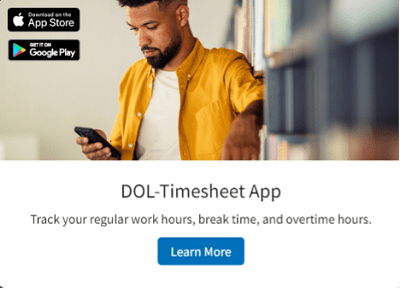
The timesheet app allows both employees and employers to keep accurate records of hours at work including regular work hours, break time, and overtime. In the event of a violation, the DOL provides easy access to make a complaint.
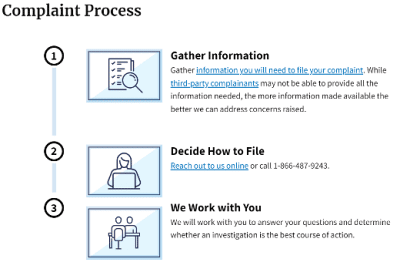
The “Worker Rights” page is filled with user-friendly information regarding an employee’s rights along with information regarding “how to file a complaint”. Additionally, the very easy to navigate complaint page provides clear instructions for each step of the complaint process.
Importantly, the DOL also provides information to workers about their rights in the event an employer retaliates against the employee for making a complaint, either internally or with the DOL.

Last question. I don’t know if we have the whole story here. So, it would be unfair to say that there’s something amiss. The FLSA has been updated in recent years. That being said, an investigation and/or audit should hopefully get to the bottom of the matter. If an organization discovers that they’re not paying an employee properly, what’s a good first step?
[Cherveny] Working closely with outside employment law counsel that specializes in the FLSA is imperative any time an employer has concerns regarding compliance with the FLSA. The FLSA is one of the more complex employment regulations and unlike many other regulations, it can be very counter-intuitive. Working with counsel accomplishes at least two things right out of the gate:
Privilege for records, documents, and conversations; and, Expert guidance for compliance and remedies.FLSA is tricky and includes a variety of complex exemptions, pay rules, and nuances. An ounce of prevention is just one component of a successful compliance program. Working with or through counsel to audit employee classifications, pay structure, bonus, and overtime calculations is a good place to start. Often, attorneys will partner with an HR consultant to perform the audit – so long as the audit is at the direction and through counsel there may be a chance to protect the audit process, papers, and findings as privileged.
Auditing employee classifications begins with the job description. I often recommend that the employer begin an audit by distributing the job descriptions to the employees performing the job and getting their comments and feedback. Employers are often surprised by the work employees describe versus the existing job description. Engaging the employee in the job description review accomplishes at least two things (1) it makes it harder for the employee to later claim misclassification later; and (2) it helps ensure that employees are doing the job that they are expected to do. Determining the actual classification of the position should include a review by your FLSA counsel to ensure that the classification is consistent with precedent and DOL rules. Counsel should also review pay practices including (among other things) the calculation of overtime for bonused and commissioned non-exempt employees along with pay deductions of exempt employees.
In the event an employer has not been in compliance with the FLSA, simply correcting the employee’s pay does not protect the employer from legal action. FLSA settlement and releases, unlike other regulations, require either DOL or court approval to be enforceable and generally may not be confidential. This means that an employer may ‘settle’ with an employee and still face litigation for the same issue. Therefore, any remedies and corrective measures should be coordinated through the advice and counsel of an experienced attorney.
A huge thanks to Carrie for sharing her knowledge with us. If you want to stay current on mitigating risk in your organization, check out the HUB International Insights blog.
Employees want to know that they are being paid properly. Frankly, organizations should want to know that as well. There’s a huge risk involved with non-compliance. Not only do companies want to establish equitable pay practices but they need to consider how they will regularly monitor employee compensation to ensure it stays that way.
Image captured by Sharlyn Lauby while exploring the streets of San Francisco, CA
The post Why Employees Need to Understand Compensation – Ask HR Bartender appeared first on hr bartender.
Why Employees Need to Understand Compensation – Ask HR Bartender

Estimated reading time: 10 minutes
Today’s reader note deals with an important subject – compensation. Both employees and employers need to know the principles of compensation so they can understand if they’re being paid correctly and equitably.
My husband and I accepted jobs with a Christian non-profit as houseparents for foster kids. The kids go to regular public school. We are required to live on premises and not allowed to work another job. We each make a salary of $446 weekly.
It was our understanding that we would be classified as salary, but nonexempt, with a 40-hour workweek. In practice, we’re treated as if we are salary exempt and have consistently worked over 40 hours weekly without further compensation. I thought salaried exempt had a minimum weekly wage of $684.
I’m hoping you can sort this out for me. If we are salary exempt, shouldn’t we each be making $684 weekly? Thank you so much for any help.
There are so many things we don’t know about this situation like where the individuals are located, what their job offer said, etc. But I thought this would be a great time for a refresher on the Fair Labor Standards Act (FLSA) which is the law that deals with exempt and nonexempt classifications.
To help us understand more, I reached out to my friend and employment law attorney Carrie Cherveny to see if she would assist, and thankfully, she said “yes”. Carrie is senior vice president of strategic client solutions in HUB International’s risk services division. In her role, she works with clients to develop strategies that ensure compliance and risk mitigation when it comes to insurances such as health and welfare programs and employment practices liability.
Please don’t forget that Carrie’s comments shouldn’t be construed as legal advice or as pertaining to any specific factual situations. If you have detailed FLSA questions, they should be addressed directly with your friendly neighborhood labor and employment attorney.
Carrie, thanks so much for being here. Let’s start with a definition. I think many people know what salaried (exempt) and hourly (nonexempt) mean. What’s “salaried nonexempt”?

[Cherveny] As you mentioned, when we talk about the rules that govern employee pay and classifications, we are talking about the Fair Labor Standards Act (FLSA). Some states may have their own equivalent which may be as strict or stricter than the federal. The FLSA establishes the non-exempt employee minimum wage, overtime, recordkeeping, and child employment standards.
A ‘salaried’ nonexempt employee is somewhat of a misnomer – while the DOL does recognize such a classification – it does not change the employee’s classification as non-exempt nor the overtime obligations. More accurately, it refers to payroll practice rather than an actual legal classification of an employee. Like you said, we all know and understand that nonexempt employees must be paid for all hours worked and must be paid at least the federal overtime rate for all hours worked in excess of 40 hours in the workweek (state laws may vary). Sometimes, an employer provides a nonexempt employee with a structured 40-hour workweek. In that case, the employer may set up a recurring payroll each week for the nonexempt employee.
However, even when the employer pays the employee a set 40-hour workweek, the employer remains obligated to capture accurate time records for each of its nonexempt employees, for at least two reasons:
it is their statutory obligation and in the event of litigation, without those records the court will rely on the employee’s version of the facts and hours worked; and, the timekeeping records are necessary to be sure that the employee is paid properly for any overtime hours worked.Consequently, I have always recommended that employers avoid this payroll approach and pay their nonexempt employees based on actual hours worked and the employee’s timekeeping records.
How would an individual find out how they are classified? Can employers change an employee’s classification without notifying them?
[Cherveny] Often, an employee’s status may be indicated on the employee’s paystub. Otherwise, the employee may ask human resources or payroll about their FLSA classification.
FLSA employee classifications are a story of substance over form. Meaning, the employees’ FLSA classification is determined by the nature of the work performed. Essentially, the FLSA default classification is nonexempt. All employees should be treated as nonexempt and subject to the minimum wage and overtime rules unless the employee’s position qualifies for an ‘exemption’. The Department of Labor (DOL) provides significant guidance and fact sheets to help employers determine if an employee’s position is eligible for an exemption. There are a number of exemptions to the minimum wage and overtime rules, but each comes with its own set of complex criteria and requirements.
Speaking of exemptions, in the FLSA, I’m aware of the ones for executive, administrative, professional, computer, and outside sales. Are there exemptions for non-profits? Or for individuals who work as houseparents?
[Cherveny] There are two ways that employees and/or employers become subject to the FLSA.
The first test is called the Enterprise Coverage Test. Employers that meet the following criteria satisfy the Enterprise Coverage Test and are subject to the FLSA:
Organizations that have an annual dollar volume of sales or business done of at least $500,000Hospitals, businesses providing medical or nursing care for residents, schools and preschools, and government agenciesHowever, when the Enterprise Coverage Test does not apply, employees may still be individually protected by the FLSA if their position satisfies the Individual Coverage Test. Employees are protected by the FLSA if their work regularly involves them in interstate commerce (commerce between states). The FLSA covers individual workers who are ‘engaged in commerce or in the production of goods for commerce’.
The DOL provides examples of duties involved in interstate commerce such as:
produce goods (such as a worker assembling components in a factory or a secretary typing letters in an office) that will be sent out of stateregularly make telephone calls to persons located in other stateshandle records of interstate transactionstravel to other states on their jobsdo janitorial work in buildings where goods are produced for shipment outside the stateFLSA and Non-Profits – While subject to the same Enterprise Test, it applies a bit differently to non-profits. Because the FLSA generally applies to businesses with annual gross volume of sales made or business done of at least $500,000, non-profit charitable organizations are generally not covered enterprises under the FLSA. However, the non-profit may be subject to the FLSA under the Enterprise Test if it engages in commercial activities that result in sales made or business done, such as operating a gift shop or providing veterinary services for a fee.
Income generated by charitable donations and membership fees are generally not included in the annual revenue calculation. The FLSA exception for non-profits is a complicated one and non-profit organizations should work closely with outside counsel to determine if they are subject to the FLSA. The DOL provides the following illustration:
A non-profit animal shelter provides free veterinary care, adoption services, and shelter for homeless animals (charitable activities). In addition, the shelter provides veterinary care for a fee to customers (commercial activities). If the revenue generated from the organization’s commercial activities is at least $500,000 in a year, the employees engaged in the commercial activities are protected by the FLSA on an enterprise basis. Employees of the organization’s charitable activities are not covered on an enterprise basis since those activities do not have a business purpose.
FLSA and Domestic Service Workers – The DOL is clear that domestic service workers (such as housekeepers, full-time babysitters, and cooks) are normally covered by the FLSA.
If an employee thinks that they aren’t being paid properly, what’s a good first step?
[Cherveny] The DOL provides employees with vast tools and resources to ensure that they are being paid properly. When an employee visits the DOL FLSA pages, they will be greeted by a pop-up inviting them to download the DOL app that will help them track their hours and overtime compensation.

The timesheet app allows both employees and employers to keep accurate records of hours at work including regular work hours, break time, and overtime. In the event of a violation, the DOL provides easy access to make a complaint.

The “Worker Rights” page is filled with user-friendly information regarding an employee’s rights along with information regarding “how to file a complaint”. Additionally, the very easy to navigate complaint page provides clear instructions for each step of the complaint process.
Importantly, the DOL also provides information to workers about their rights in the event an employer retaliates against the employee for making a complaint, either internally or with the DOL.

Last question. I don’t know if we have the whole story here. So, it would be unfair to say that there’s something amiss. The FLSA has been updated in recent years. That being said, an investigation and/or audit should hopefully get to the bottom of the matter. If an organization discovers that they’re not paying an employee properly, what’s a good first step?
[Cherveny] Working closely with outside employment law counsel that specializes in the FLSA is imperative any time an employer has concerns regarding compliance with the FLSA. The FLSA is one of the more complex employment regulations and unlike many other regulations, it can be very counter-intuitive. Working with counsel accomplishes at least two things right out of the gate:
Privilege for records, documents, and conversations; and, Expert guidance for compliance and remedies.FLSA is tricky and includes a variety of complex exemptions, pay rules, and nuances. An ounce of prevention is just one component of a successful compliance program. Working with or through counsel to audit employee classifications, pay structure, bonus, and overtime calculations is a good place to start. Often, attorneys will partner with an HR consultant to perform the audit – so long as the audit is at the direction and through counsel there may be a chance to protect the audit process, papers, and findings as privileged.
Auditing employee classifications begins with the job description. I often recommend that the employer begin an audit by distributing the job descriptions to the employees performing the job and getting their comments and feedback. Employers are often surprised by the work employees describe versus the existing job description. Engaging the employee in the job description review accomplishes at least two things (1) it makes it harder for the employee to later claim misclassification later; and (2) it helps ensure that employees are doing the job that they are expected to do. Determining the actual classification of the position should include a review by your FLSA counsel to ensure that the classification is consistent with precedent and DOL rules. Counsel should also review pay practices including (among other things) the calculation of overtime for bonused and commissioned non-exempt employees along with pay deductions of exempt employees.
In the event an employer has not been in compliance with the FLSA, simply correcting the employee’s pay does not protect the employer from legal action. FLSA settlement and releases, unlike other regulations, require either DOL or court approval to be enforceable and generally may not be confidential. This means that an employer may ‘settle’ with an employee and still face litigation for the same issue. Therefore, any remedies and corrective measures should be coordinated through the advice and counsel of an experienced attorney.
A huge thanks to Carrie for sharing her knowledge with us. If you want to stay current on mitigating risk in your organization, check out the HUB International Insights blog.
Employees want to know that they are being paid properly. Frankly, organizations should want to know that as well. There’s a huge risk involved with non-compliance. Not only do companies want to establish equitable pay practices but they need to consider how they will regularly monitor employee compensation to ensure it stays that way.
Image captured by Sharlyn Lauby while exploring the streets of San Francisco, CA
The post Why Employees Need to Understand Compensation – Ask HR Bartender appeared first on hr bartender.
December 8, 2022
Why Employees Need to Understand Compensation ��������������������������������������������������–ow to Tell the Company Your Reason for Resigning � Ask HHR Bartender�����������������

Estimated reading time: 4 minutes
I’ve written in the past about how to resign from your job, but this is a very interesting note about what to say when it comes to the reason for leaving.
Hi, Sharlyn. I want some advice on how to tell my employer why I’m leaving my job.
The reason is very personal and it’s a situation that I believe I need to prepare for. To properly take care of my situation, I believe it’s best to become unemployed for a while. I think I need the time that a job takes up to prepare myself for the future. I work full-time, and my employer does not allow the option for employees to work part-time at my job in case you think to mention that as a possible alternative.
Honestly, I’m not sure whether my employer would agree with my decision. So, I’m trying to figure out how I would tell my employer my reason for leaving, or if I should be so forthright in telling my employer the reason for my leaving at all.
I like my job and the company I work for. If I thought they would work with me (in terms of flexibility), I think would stay. The main thing is that I want to stay on good terms with my employer so I might have the option to return. But for right now, I am pretty much resolute in my decision to leave my employer in pursuit my goals.
I look forward to hearing back you.
I can think of many reasons that an employee would resign and not want to get into a lot of detail regarding the reason (i.e., an upsetting health diagnosis, a change in family status, being victim of a crime, feeling unsure/unsafe about their living situation, etc.). My thanks to this reader for sharing this situation with me.
Let me start by saying that there’s no rule that says you have to tell the company why you’re resigning. You can simply say “it’s personal” or “it’s private” and leave it at that. I’d like to think that an organization would be respectful of your comments and not push the matter.
Obviously though, organizations ask for a reason so if they spot a trend, they can address it. For instance, in this situation, the reader makes it clear that the company doesn’t allow for part-time work. Well, what if all of a sudden, several employees were resigning for part-time work, then the company might consider changing their policy. So, organizations aren’t asking to be nosy. They’re asking so they can potentially address problems and keep good people.
Speaking of part-time work, I know this note says it’s not allowed, but could this be one of those situations where confirming the company policy makes sense? Recruitment and retention are tough. Good employees who like their job and the company are hard to find. Does it make sense to ask if the company would consider part-time work? Maybe offer to be the ‘test’ employee? You know your organization and can decide if it is worth asking just to be sure.
If an employee wants to offer a reason for resigning, but is unsure about what to say, here’s another option. Some employees when they are resigning give a reason but not the *real* reason. I’m not saying that employees lie. What I mean is that an employee might say, “I found a job closer to home that pays more.” And that’s true. But the real reason – the reason that the employee started looking in the first place – is because their boss is a bully. So, if you have a reason for leaving that you would rather not share BUT you also have one that you’re fine with sharing…focus on the latter. Maybe an employee could say, “I have some personal issues that I need to focus on right now, so I’m going to find something part-time or on-call.”
One last thing. There is something in this reader note that the employee should definitely say to the company. If you love your job – say it. If you enjoy working for the company – say it. If you’d like to be considered for rehire at a future date – tell them. I’m sure the company would appreciate hearing that your employment experience was a good one.
No one knows for sure what the future brings. We will all have challenges that we have to deal with, including how we will handle our jobs. And that doesn’t mean we have to share all the details. Think about what you’re comfortable sharing including how you believe it would be received. And don’t forget to share the good things.
Image captured by Sharlyn Lauby while exploring the streets of Dallas, TX
The post How to Tell the Company Your Reason for Resigning – Ask HR Bartender appeared first on hr bartender.
How to Tell the Company Your Reason for Resigning – Ask HR Bartender

Estimated reading time: 4 minutes
I’ve written in the past about how to resign from your job, but this is a very interesting note about what to say when it comes to the reason for leaving.
Hi, Sharlyn. I want some advice on how to tell my employer why I’m leaving my job.
The reason is very personal and it’s a situation that I believe I need to prepare for. To properly take care of my situation, I believe it’s best to become unemployed for a while. I think I need the time that a job takes up to prepare myself for the future. I work full-time, and my employer does not allow the option for employees to work part-time at my job in case you think to mention that as a possible alternative.
Honestly, I’m not sure whether my employer would agree with my decision. So, I’m trying to figure out how I would tell my employer my reason for leaving, or if I should be so forthright in telling my employer the reason for my leaving at all.
I like my job and the company I work for. If I thought they would work with me (in terms of flexibility), I think would stay. The main thing is that I want to stay on good terms with my employer so I might have the option to return. But for right now, I am pretty much resolute in my decision to leave my employer in pursuit my goals.
I look forward to hearing back you.
I can think of many reasons that an employee would resign and not want to get into a lot of detail regarding the reason (i.e., an upsetting health diagnosis, a change in family status, being victim of a crime, feeling unsure/unsafe about their living situation, etc.). My thanks to this reader for sharing this situation with me.
Let me start by saying that there’s no rule that says you have to tell the company why you’re resigning. You can simply say “it’s personal” or “it’s private” and leave it at that. I’d like to think that an organization would be respectful of your comments and not push the matter.
Obviously though, organizations ask for a reason so if they spot a trend, they can address it. For instance, in this situation, the reader makes it clear that the company doesn’t allow for part-time work. Well, what if all of a sudden, several employees were resigning for part-time work, then the company might consider changing their policy. So, organizations aren’t asking to be nosy. They’re asking so they can potentially address problems and keep good people.
Speaking of part-time work, I know this note says it’s not allowed, but could this be one of those situations where confirming the company policy makes sense? Recruitment and retention are tough. Good employees who like their job and the company are hard to find. Does it make sense to ask if the company would consider part-time work? Maybe offer to be the ‘test’ employee? You know your organization and can decide if it is worth asking just to be sure.
If an employee wants to offer a reason for resigning, but is unsure about what to say, here’s another option. Some employees when they are resigning give a reason but not the *real* reason. I’m not saying that employees lie. What I mean is that an employee might say, “I found a job closer to home that pays more.” And that’s true. But the real reason – the reason that the employee started looking in the first place – is because their boss is a bully. So, if you have a reason for leaving that you would rather not share BUT you also have one that you’re fine with sharing…focus on the latter. Maybe an employee could say, “I have some personal issues that I need to focus on right now, so I’m going to find something part-time or on-call.”
One last thing. There is something in this reader note that the employee should definitely say to the company. If you love your job – say it. If you enjoy working for the company – say it. If you’d like to be considered for rehire at a future date – tell them. I’m sure the company would appreciate hearing that your employment experience was a good one.
No one knows for sure what the future brings. We will all have challenges that we have to deal with, including how we will handle our jobs. And that doesn’t mean we have to share all the details. Think about what you’re comfortable sharing including how you believe it would be received. And don’t forget to share the good things.
Image captured by Sharlyn Lauby while exploring the streets of Dallas, TX
The post How to Tell the Company Your Reason for Resigning – Ask HR Bartender appeared first on hr bartender.
December 6, 2022
Change Management [Season 2 Episode 4] Managing an Inclusive Workplace
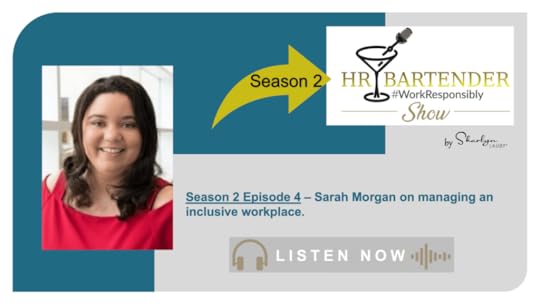
Estimated reading time: 3 minutes
Creating and managing an inclusive workplace isn’t an HR program. Like company culture, it belongs to the entire organization. Even though there will be times when HR is the one initiating the conversation.
That’s why I loved this episode of The HR Bartender Show with Sarah Morgan. Sarah is director of equity and inclusion at Humareso, where she works with customers nationwide to create workplaces where people from traditionally marginalized identities can better thrive. Prior to joining Humareso, she worked as an HR executive at brands such as Jiffy Lube, KFC, Taco Bell, and ADT Home Security.
Sarah is also well-known for her blog The Buzz on HR and Leading in Color podcast. Her work in the digital space focuses on cultivating positive workplace experiences through diversity, inclusion, and social consciousness. You might remember that Sarah and I spoke a while ago about “How to Be a Better Ally – Not an Optical Ally”.
In today’s episode we talk about the importance of organizations not just “proclaiming” what they believe in, but backing it up with their actions.

Organizations need to have intentional discussions about what creating an inclusive environment looks like and how they are going to make it happen. Because when we create inclusive work environments, people feel comfortable to do their best work. And that benefits everyone.
But it also means that we need to be ready to put some of personal views aside and instead focus on humanity. It might mean getting comfortable with talking about issues we haven’t previously discussed in a corporate setting.
Connect with Sarah Morgan
Twitter:
https://twitter.com/TheBuzzOnHR
https://twitter.com/leadingincolor
https://twitter.com/blackpodsmatter
https://twitter.com/blckblgsmttr
LinkedIn: https://www.linkedin.com/in/sarahkayemorgan/
Website: https://buzzarooneyllc.com
Season 2 Episode 4 – Sarah Morgan Show Notes
Season 2 Episode 4 – Sarah Morgan Transcripts
Thanks for listening to our podcast. This season of the HR Bartender show is brought to you by our friends at Ultimate Kronos Group (UKG), a leading global provider of human capital management, payroll, HR service delivery, and workforce management solutions.

You can subscribe to the HR Bartender show on Apple Podcasts, Spotify, Google Podcasts, Stitcher, and TuneIn. And we would absolutely love it if you would leave a review.
If you enjoyed this episode, be sure to check out other episodes on our podcast page.
The post Change Management [Season 2 Episode 4] Managing an Inclusive Workplace appeared first on hr bartender.
December 4, 2022
Create a More Inclusive Workforce with More Inclusive Job Postings

Estimated reading time: 5 minutes
I came across a very interesting read on Employee Benefit News titled “Not investing in DEI? That decision could cost your company”. It’s worth checking out. We continue to hear that organizations are quick to make statements supporting diversity, equity, and inclusion (DEI) but are slow when it comes to implementing change.
One area that organizations should be talking about when it comes to DEI is the recruiting process. Specifically, how to write a more inclusive job posting. Because if we can create a more inclusive hiring process then we can move toward a more inclusive workplace.
To help us understand more about writing inclusive job postings, I reached out to Katrina Kibben, chief executive officer and founder of Three Ears Media, a consultancy focused on helping organizations write great job postings. I love Katrina’s focus on developing better job postings. There are many aspects of the hiring process that we don’t have control over but the one we do have control over is how we ask people to consider working for us (i.e., how to communicate the job opening).
Katrina, thanks so much for being here. Before we talk about job postings, I want to talk about the recruitment strategy meeting (aka manager intake meeting). I believe this is one of the first recruitment activities where we discuss the best way to communicate the job opening. Is there anything that organizations need to add / subtract from that discussion, so the result is a more inclusionary job posting?

[Kibben] Hiring managers are the difference between a good and great job posting. Ultimately, they determine if it will be a successful hire as well. What most of us need to do is stop asking for lists. If you ask for a list, you’ll be treated like an order taker. Managers will hyper focus on the one thing you didn’t bring, much like we do when we order takeout, and the restaurant forgets the one thing we know now we *really* wanted.
To pivot from that, you need to ask questions that inspire imagination instead of lists. You ask, “What do your best colleagues have in common?” not “What codes do they use?”. By the end of the intake meeting, your manager and recruiter should be confident about what you’re looking for or you will never find it. Regarding inclusion, when we write about experiences versus skills, you’re naturally creating less gender biased language.
I’d like to think we all know what a job posting is, but should they be written one way for an internal audience and another way for an external audience? Why or why not?
[Kibben] No, but your internal audience should see it before you ever post online. If there’s someone who is qualified and wants to do the job in house, they should have access before we ever open it up to external applications.
In thinking about audiences, it’s important for a job posting to attract a diverse audience. But the skeptic in me says that any organization can write a sentence that says, “we support diversity”. What are 2-3 things that organizations can communicate in their job openings to show that they really mean it?
[Kibben] Organizations can change the way they write requirements, so they stop using job postings to kick people out. Instead, invite people in. For example:
It’s removing years of experience instead of saying “We aren’t ageist.” It’s removing unnecessary degree requirements and the inherent privilege bias instead of saying “We’re down to earth and open to people of all backgrounds.”One of the disconnects I hear from candidates is that the job posting says one thing and the interview experience is another. It reminded me of a recent article on your blog about International Pronouns Day (where an organization might promote inclusion and then totally mess up a candidate’s pronouns) . How can interviewers show candidates that the hiring experience will actually be the inclusive experience that the job posting promises?
[Kibben] I would do two things. First, use automation tools like those automated emails that come after you apply. Using automation to communicate key messages creates consistency.
Then, train interviewers to say, “Our interview questions will be based on the content of the job posting. We will discuss scenarios and situations where you have had these experiences to see how you approach challenges and the results you drove. Please be prepared to offer examples of the projects identified in the posting.”
Last question. I noticed that you have an ebook on your website that addresses recruiting emails . Lots of emails get sent during the hiring process. Especially after the interview. What’s one thing interviewers and candidates should do in their emails to show that they support an inclusive workplace?
[Kibben] Ask more questions. For example, “How should I refer to you?” to ask about pronouns. “How can I help make you most successful?”, “What system is most helpful for you?”, etc.
A huge thanks to Katrina for sharing their knowledge with us. If you want to learn more about writing better job postings, you can subscribe to Katrina’s blog. And they offer several free resources on the Three Ears Media site including a job post writing workbook.
There’s an old computer term called GIGO (garbage in, garbage out). It reminds us that poor systems result in poor outcomes. If organizations are serious about creating a more inclusive workplace, then they need to have an inclusive hiring process. And the hiring process starts with writing a good job posting.
Image captured by Sharlyn Lauby while exploring the streets of Gainesville, FL
The post Create a More Inclusive Workforce with More Inclusive Job Postings appeared first on hr bartender.
December 1, 2022
Recruiting Will Continue to Be a Top Priority for Organizations
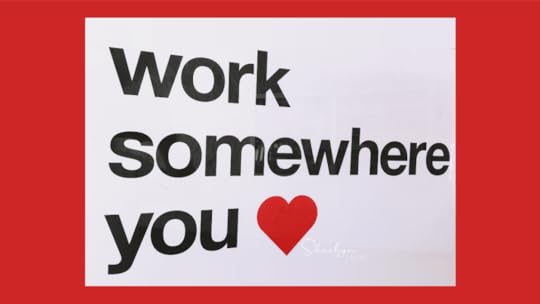
Estimated reading time: 3 minutes
It might be very tempting right now to look at news headlines talking about hiring freezes and layoffs and say, “Oh, recruiting is going to slow down.” And I’m not sure that’s true for several reasons. First, hiring and retaining the best talent is always a priority for companies. Regardless of what the labor market looks like, companies want to hire qualified employees who will do a good job.
Then – and this one is directly related to the job market – there are still a lot of job openings. True, there might not be a lot of openings at some places right now. But at some point, organizations will have their financial forecasts in order and be looking to grow. That’s not the time to start thinking about hiring strategies. The time to think about hiring strategies is now.
Here are a few resources to help organizations assess and update their recruiting strategy.
10 Top Recruiting Trends that Organizations Need to Know
Finding and hiring the best talent has always been a business priority. Now, there’s increased competition and that can change things for recruiting. Even companies that have enjoyed a steady stream of applicant flow might find themselves working harder to attract talent. That’s why it’s important to get the basics right and look for ways to stand out in this very crowded market.
Your Recruiting Strategy Needs to Have Alternatives
If organizations want to be fully staffed, they must think about everything when recruiting, not simply the requisition. We should be preparing employees for future opportunities from an organizational standpoint and think about it even before the employee gets hired. Because if we don’t, there’s a chance that the employee won’t view promotional opportunities in our organization as being worthwhile.
7 Questions That Will Make Your Recruiting Process More Efficient
When we hire someone and they leave shortly after starting, that puts a strain on the recruiting function. It’s one of the reasons we need to regularly assess the efficiency of our processes. Because if we have a good process, then hopefully candidates see that and want to be a part of an efficient and successful organization.
8 Recruiting Actions that Organizations Need to Be Effective
Organizations with sound processes will get more applicants. Companies that focus on knowledge, skills, abilities, and competencies will hire great employees. And recruiting departments that use data to partner with the rest of the organization will get the resources they need to do more.
Replacement Planning Is an Important Part of the Succession Planning Process
While organizations are working hard to hire, engage, and retain the best talent, it would be naïve to think employees never leave. Replacement plans provide the organization with the comfort that a last-minute resignation, retirement, or employee illness will not leave the company at a talent disadvantage.
Title Inflation Can Attract Talent but Deflate a Job
Title inflation doesn’t mean that you can’t negotiate a job title. It’s a normal part of the process. But both employees and organizations must be realistic about what the title represents. What might benefit you in the short-term, could hurt you in the long-term.
Organizations do not want to get caught off guard when it comes to their recruiting efforts. This is a highly competitive business environment, which means it’s a highly competitive job market. We all know there are places in the budget that we can trim and, if necessary, we can do that. But recruiting isn’t one of them. Because finding the best employees is what will help the organization grow and be profitable.
Image captured by Sharlyn Lauby while exploring the streets of Fort Lauderdale, FL
The post Recruiting Will Continue to Be a Top Priority for Organizations appeared first on hr bartender.
November 29, 2022
Become a Better Mental Health Ally Through Training

Estimated reading time: 4 minutes
If you haven’t seen it, the U.S. Surgeon General has said that workplaces can be great (or not-so-great) for our mental health. This shouldn’t be surprising. Individuals working in a toxic work environment are going to feel the impact of what’s happening around them which will take a negative toll. That’s why in the American Psychological Associations 2022 Work and Wellbeing Survey, 81% of employees reported that they will be looking for organizations that support mental health.
But what does “supporting mental health” mean? I’m confident this is not an exhaustive list, but three things immediately come to mind.
First, organizations should have a structure in place that doesn’t contribute to a toxic work environment. In the U.S. Surgeon General’s message mentioned above, they have created a framework for workplace mental health and wellbeing. It’s available for download. It references several components for promoting wellbeing. Here are just five of them.
Psychological safetyInclusion and belongingScheduling flexibilityRewards and recognitionCareer advancementNot only are these components great for employee mental fitness and wellbeing, they’re great for the employee experience. That makes them great for productivity and employee retention.
Next, organizations should include mental health benefits in employee benefits programs. In the 2021 Mental Health at Work Report, 75% of full-time U.S. workers reported experiencing at least one symptom of a mental health condition in the past year. Let me add, this should be openly mentioned when explaining employee benefits. Translation: Don’t make employees ask whether they have benefits that support mental wellbeing. Making someone ask could be perceived as embarrassing and keep someone from using the benefit.
Third, it could be helpful to have human resources and other operational managers receive training on how to handle mental fitness issues in the workplace. The Society for Human Resources Management (SHRM) and the SHRM Foundation partnered with Psych Hub, the world’s largest mental health education platform, to offer the Workplace Mental Health Ally Certificate.
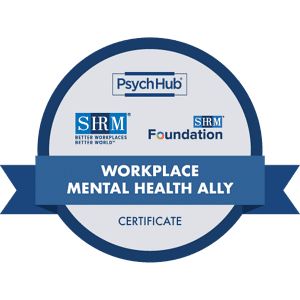
The program covers the foundations of mental wellbeing, suicide and violence prevention, substance abuse, diversity and bias, and effective communications. It’s self-paced and includes sharable resources. The purpose of the program isn’t for participants to become experts in delivering mental health care. It is to help us understand the dangers of stigma regarding mental fitness, recognize common mental health conditions, and practical ways we can help someone get the proper care they need.
SHRM and the SHRM Foundation graciously allowed me to take the program. I found the self-paced online format to be very helpful to my schedule. There were two big takeaways for me with this program. First, the program gets into detail about mental health conditions including substance abuse, abusive relationships, and suicidal ideation. So, if you’re thinking a mental health condition falls into one category – you’d be wrong. This program could change your thoughts about what a mental health condition is.
The second takeaway was the impact that negative diversity and inclusion efforts have on mental wellbeing. Yes, I knew there was a connection but the statistics and the way it was presented really resonated with me. Especially because the program talked about aspects of diversity we don’t regularly discuss at work like body image.
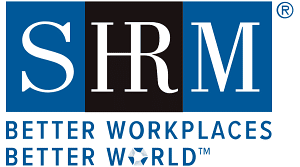
I understand how it could be a challenge to help someone who is at risk or looking for support, especially if you’ve never been in the situation before. Maybe not knowing the right thing to say or do. Or where to direct the person for care. That’s why a program like the Workplace Mental Health Ally Certificate could be valuable.
Part of supporting mental health is being able to communicate. We need to be able to listen and possibly guide an employee to get the resources they need – maybe for themselves or for a family member. I felt my participation in the Workplace Mental Health Ally Certificate program gave me resources that I could use and made me more comfortable to have helpful and supporting conversations as a true ally.
SHRM logo used with permission.
The post Become a Better Mental Health Ally Through Training appeared first on hr bartender.
November 20, 2022
New Equal Employment Opportunity Compliance Posters

Estimated reading time: 4 minutes
(Editor’s Note: Today’s article is brought to you by our friends at Poster Guard® Compliance Protection , a division of HRdirect and the leading labor law poster service that gets your business up to date with all required federal, state, and local labor law postings, and then keeps it that way — for an entire year. Enjoy the article!)
The U.S. Equal Employment Opportunity Commission (EEOC) is responsible for investigating charges of discrimination against employers who are covered by federal anti-discrimination laws. Most employers with at least 15 employees are covered under EEOC laws. In situations of age discrimination, it’s 20 employees. Most labor unions and employment agencies are also covered. EEO laws apply to all types of work situations including hiring, wages, benefits, training, harassment, promotions, and firing.
The reason I’m sharing the role of the EEOC is because on October 20, 2022, the EEOC issued a new “Know Your Rights” poster. This poster replaces the “EEO is the Law” poster. Covered employers are required to display this poster at their work site.
This might mean that your organization needs to update their poster – and you want to do it now. The last thing an organization wants is for employees to see outdated compliance posters. It sends the message that following the law isn’t important and might cause job candidates or employees to wonder, “What else isn’t the company keeping up with?” Non-compliance can also result in penalties, fines, and increased exposure in the event of litigation.
Now that you’re in the market for a new poster, please take a moment to think about your overall compliance poster strategy. This is a moment where HR has the opportunity to move from being reactive to proactive when it comes to employment law compliance.
Let’s step back for a second from the immediate need of the new EEO poster. Nationwide, there are about 175 different state and federal government agencies that are responsible for more than 400 mandatory posters, and many more on a local level. According to our friends at Poster Guard, they tracked more than 200 federal, state, and local mandatory poster updates last year. Think of all the hours it takes to maintain compliance in this area. Is that how HR wants to spend their time?! I think not.
Instead of doing all this work yourself, check out Poster Guard’s Compliance Poster Service. With this service, you would receive an up-to-date federal poster, which includes the new EEO poster PLUS the other five federal mandatory posters. The service also includes all the up-to-date state and local posters for your location(s). But to me, this is the best part…for the next twelve months, you would get new posters every time a mandatory change occurs . . . automatically with no additional cost. Poster Guard provides a 100% guarantee that the posters are compliant – or they’ll pay any government posting fine.

Honestly, I’ve said it before, and I’ll say it again. This is money well spent. As HR professionals, researching labor law poster changes is just not a good use of our time. Especially when there are companies like Poster Guard with teams of people led by attorneys who can do it for you – effectively and efficiently. This frees up HR’s time to focus on hiring, engaging, and retaining employees.
So, go get your new EEO poster. And while you’re at it, think about how you want to maintain compliance posters moving forward. This is the perfect time to move from a reactive compliance strategy to a proactive one by signing up for a compliance poster service. The organization maintains compliance. HR spends their time on projects that need their attention. And employees know the company cares about following the law.
The post New Equal Employment Opportunity Compliance Posters appeared first on hr bartender.
November 17, 2022
Use Acronyms to Manage Organizational Change Well
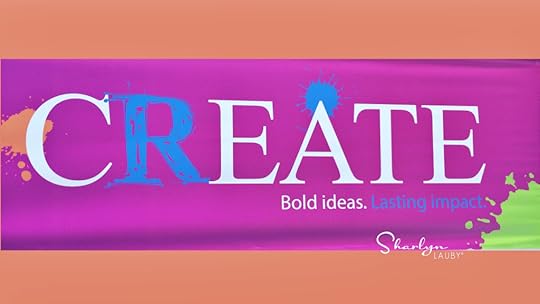
Estimated reading time: 3 minutes
I was facilitating a training session on organizational change recently and we were discussing different change models. I’ve written before that one of my favorites is Lewin’s 3-phases (unfreeze, change, refreeze). Someone in the session mentioned that a previous supervisor always used the acronym PORK when talking about change.
Positive: Keep a positive or confident outlook about the change.
Optimistic: Show hope or optimism that the change will result in improvement.
Realistic: Be realistic or sensible regarding the change steps and timeline.
Kindness: Stay kind or considerate to others during the change process.
Several of us immediately asked if we could steal or share this idea and thankfully, the person said “yes”.
One of the reasons I wanted to share the PORK acronym is because it’s catchy and fun. Personally, I find that I remember catchy, fun acronyms – like SMART (specific, measurable, actionable, responsible, and time-bound) and MOCHA (manager, owner, consultant, helper, and approver). And when I remember an acronym, then…I use them. And that’s what this is really all about. Finding an effective way to manage change.
Another thing I liked about the PORK acronym was it was a bit more person-centric versus process. To me, change models like Lewin focus on process but often don’t help an individual manage their feelings. I could see myself using PORK to ask myself questions like “Are you keeping a positive outlook?”, “Have you thought about the improvements that the change will bring?”, “Are you being realistic about how long the change will take?”, and “Are you being kind to others – and yourself – during this transition?”.
And I won’t lie, using an acronym like PORK to manage change could have some fun branding elements to it. Part of managing change is being able to enjoy the journey. Even when it’s difficult. I believe organizations and individuals often do not take enough time to celebrate their successes. Including the small victories. Maybe an acronym like PORK will help organizations and individuals remember to pause and celebrate along the way.
I do recognize that some people might not care for the PORK acronym for a variety of reasons. I totally respect that. On some level, it’s not about the word. It’s about finding easy to remember acronyms to help manage change. You could easily turn PORK into CROP (considerate, realistic, optimistic, positive).
Organizational change isn’t going to stop. That means individual change isn’t going away either. Finding little tips and resources that work for you will be the key to managing change well.
Image captured by Sharlyn Lauby after speaking at the SHRM Annual Conference in Las Vegas, NV
The post Use Acronyms to Manage Organizational Change Well appeared first on hr bartender.
Sharlyn J. Lauby's Blog
- Sharlyn J. Lauby's profile
- 10 followers



